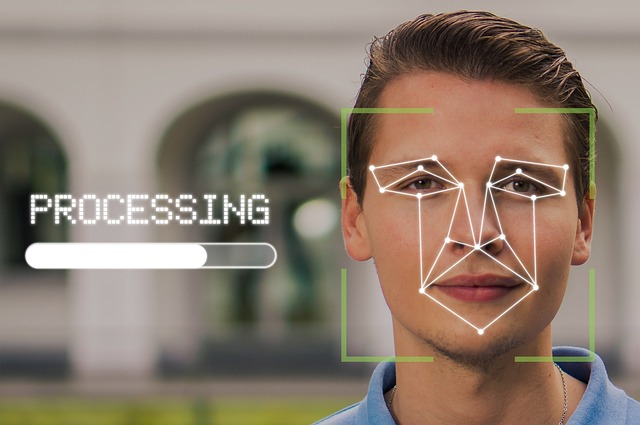
Hello, Guys! Exploring Secure Facial Recognition Technology in Smartphones for Enhanced Privacy
The Rise of Facial Recognition
Facial recognition technology has become increasingly prevalent in smartphones, offering users a convenient and secure way to unlock their devices and access sensitive information. In this article, we’ll delve into the world of secure facial recognition and how it enhances privacy in modern smartphones.
Understanding Facial Recognition
Facial recognition technology utilizes biometric data from a user’s face to verify their identity. By analyzing facial features such as the distance between eyes, nose, and mouth, smartphones can create a unique digital signature that serves as a secure authentication method.
Enhanced Security Measures
Guys, one of the primary advantages of facial recognition is its enhanced security measures. Unlike traditional password-based methods, which can be forgotten, stolen, or guessed, facial recognition offers a more secure and reliable authentication process, reducing the risk of unauthorized access to your device.
Convenience and Accessibility
Facial recognition technology also enhances convenience and accessibility for smartphone users. With just a glance, you can unlock your device and access your apps, messages, and other sensitive information, eliminating the need for manual input or remembering complex passwords.
Biometric Data Encryption
To ensure the privacy and security of users’ biometric data, smartphones employ advanced encryption techniques. Facial recognition data is stored locally on the device and encrypted to prevent unauthorized access or tampering, providing users with peace of mind regarding their privacy.
Multi-Factor Authentication
Many smartphones offer multi-factor authentication, combining facial recognition with other security measures such as fingerprint scanning or passcodes. This multi-layered approach further enhances security by requiring multiple forms of authentication to access sensitive information.
Continuous Improvements
As technology evolves, so too does facial recognition technology. Manufacturers are constantly refining algorithms and implementing new features to improve accuracy, reliability, and security. This ongoing development ensures that facial recognition remains a robust and effective security measure.
Privacy Concerns and Safeguards
Despite its benefits, facial recognition technology has raised privacy concerns regarding the collection and use of biometric data. To address these concerns, smartphones incorporate safeguards such as user consent, data encryption, and transparent data handling practices.
Opt-In Features
Guys, most smartphones require users to opt-in to facial recognition features, giving them control over whether to use this technology or not. Additionally, users can usually revoke permissions or delete facial recognition data from their devices at any time, further safeguarding their privacy.
Local Processing for Added Security
To enhance security and privacy, facial recognition data is often processed locally on the device rather than being transmitted to external servers. This reduces the risk of data breaches or unauthorized access to sensitive information, providing users with greater peace of mind.
Regulatory Compliance
Smartphone manufacturers adhere to strict regulatory standards regarding the collection and use of biometric data. Compliance with regulations such as the General Data Protection Regulation (GDPR) ensures that facial recognition technology is implemented in a manner that respects user privacy and rights.
Conclusion: Embracing Secure Facial Recognition for a Safer Future
As we wrap up our exploration of secure facial recognition technology in smartphones, it’s clear that this innovation holds immense promise for enhancing both security and privacy in our digital lives. By leveraging the unique characteristics of our faces, smartphones offer a convenient and reliable authentication method that is difficult for unauthorized individuals to replicate.
However, as with any technological advancement, it’s essential to strike a balance between security and privacy. While facial recognition provides robust protection against unauthorized access, it also raises concerns about the potential misuse of biometric data and the erosion of personal privacy.
Manufacturers and regulatory bodies must work hand in hand to address these concerns and establish clear guidelines for the responsible use of facial recognition technology. By implementing transparent data handling practices, ensuring user consent, and prioritizing data security, smartphone companies can build trust with their users and mitigate privacy risks.
Furthermore, ongoing research and development efforts are crucial for advancing facial recognition technology while addressing its limitations and vulnerabilities. By continuously refining algorithms, improving accuracy, and enhancing security measures, we can ensure that facial recognition remains a valuable tool for safeguarding our digital identities.
It’s also important for users to stay informed and proactive about their digital privacy. By understanding how facial recognition technology works and familiarizing themselves with their smartphone’s privacy settings, users can take control of their personal data and make informed decisions about its use.
In the end, secure facial recognition technology in smartphones represents a significant step forward in our ongoing quest for digital security and privacy. By embracing this innovation while remaining vigilant about its implications, we can create a safer and more secure digital future for all.
Thank you for joining us on this journey through the world of facial recognition technology. We hope you found this exploration informative and insightful. Stay tuned for more exciting developments in the ever-evolving landscape of smartphone technology!
See You Again in Other Interesting Articles!


